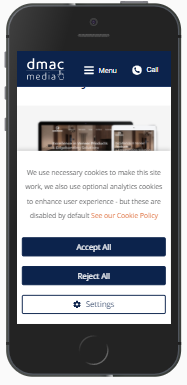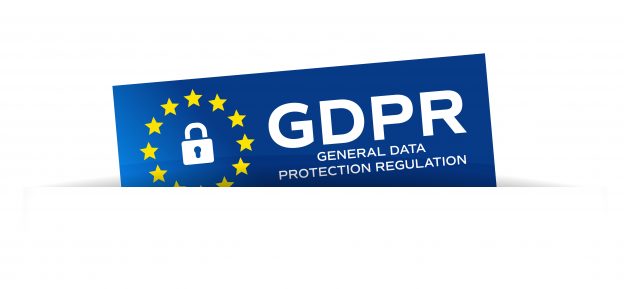What has GDPR Compliance done to our Website Traffic?

It’s been a little more than a month since the much publicised GPDR Compliance deadline has passed. This latest development in the world of compliance has had its fair share of ups and downs for businesses with a vested interest in the online environment. If this is the first time, you’re hearing about the Irish Data Protection Commissioners updated guidance, fear not, you can read everything you need know right here.
Centring largely around the use of cookies by business websites and the rights of website visitors in relation to the use of such cookies, achieving compliancy requires users to give permission for nonessential cookies to be used while visiting a website. This might not sound very impactful, but many businesses have experienced or noted a difference in one aspect of their digital life.
As digital marketing professionals, we may have taken for granted the incredible insight and knowledge we could generate through the likes of Google Analytics. We’ve previously written about the value of Google Analytics when it comes to monitoring and making decisions on your digital assets, and however insightful, this unfortunately falls under the nonessential tracking as set out by the Data Protection Commissioners updated guidance.
Many clients have started to report downturns in traffic, conversions and goal completions being tracked in Google Analytics as users now must opt into non-essential cookies. Queue the worry and fear of underperformance among website managers and digital marketers alike. This sudden, and in many cases exponential loss in traffic, has sparked conversations in many circles about non compliancy or varied levels of compliance when it comes to the latest guidance.
This prompted Dmac Media to conduct a number of experiments using our own website to help navigate the murky waters of GDPR Compliancy and help assess the options when it comes to web performance evaluation and GDPR Compliance. To date, we have implemented two variations on compliable cookie notifications and in turn assessed what happened with our Google Analytics profile.
Scenario 1 – Multi Click Acceptance
In this scenario, we left the opt in decision entirely in the hands of users. Our Cookie Policy notification did not allow users to set nonessential cookies by clicking on “Accept All”. Instead, users had to navigate to the cookie settings panel and click the slider to enable analytics tracking.
Requiring users to carry out multiple steps to give insight into their session and behaviour was never likely to be positive, and unsurprisingly it wasn’t. While implemented we saw a 98.31% decline in users, and a 92.38% decline in sessions tracked in Google Analytics.
The conclusion, website users are very unlikely to go out of their way to give businesses more insight into their onsite activities.
Scenario 2 – Single Click Acceptance
We then amended our cookie policy notification, to allow users accept or reject non-essential cookies or manage their cookie settings. Essentially, this removed a step for the user and allowed them opt in to or out of none essential cookies in the same fashion that they have become accustomed; by clicking on a single button loaded when the website loads. As expected, users began to “Accept All” by default and in turn traffic returned within our Google Analytics account. However, this was at much lower volumes than before our first experiment.
Naturally, this got us thinking. Our search visibility has never been higher yet traffic in Google Analytics has decreased?
Surely this couldn’t be right.
It was then, we considered the device bias. As a B2B business, the vast majority of our website traffic arrives via desktop devices. When viewing our website, our eloquently designed (hat tip to the graphic design team) Cookie Notification sits at the bottom of our website and is minimally intrusive on the end user when engaging with our website. While the notification remains in place until such a time as the user interacts with (as required under the guidance), it poses little, if any, impact on the user while engaging with the website, and could in fact be overlooked by many of our website visitors.

However, the same implementation on Mobile Devices is far more intrusive thanks to the smaller screen size and length of text.

As a result, the bias of our tracked traffic shifted from 70/30 in favour of desktop before implementing any changes to 60/40 in favour of Mobile after implementing the second scenario detailed above.
So Where to Next?
While it is pleasing to see a return of traffic to our Google Analytics account, we certainly do not believe all the questions have been answered just yet.
Do users continue to opt for blind acceptance? Are users choosing to reject non-essential cookies when visiting websites or is our cookie policy notification to well-designed that it is simply glossed over by users on desktop?
Later this month, we will attempt to answer the latter of those questions when our development team implement a more intrusive policy for desktop visitors.
Stay tuned to find out how it goes and how it effects our tracked traffic to dmacmedia.ie


 Strong Customer Authenitcation - What Is It?
Strong Customer Authenitcation - What Is It? Has the Pandemic Made us More Tech Savvy?
Has the Pandemic Made us More Tech Savvy? Bad Reviews and How You Should Deal With Them.
Bad Reviews and How You Should Deal With Them.